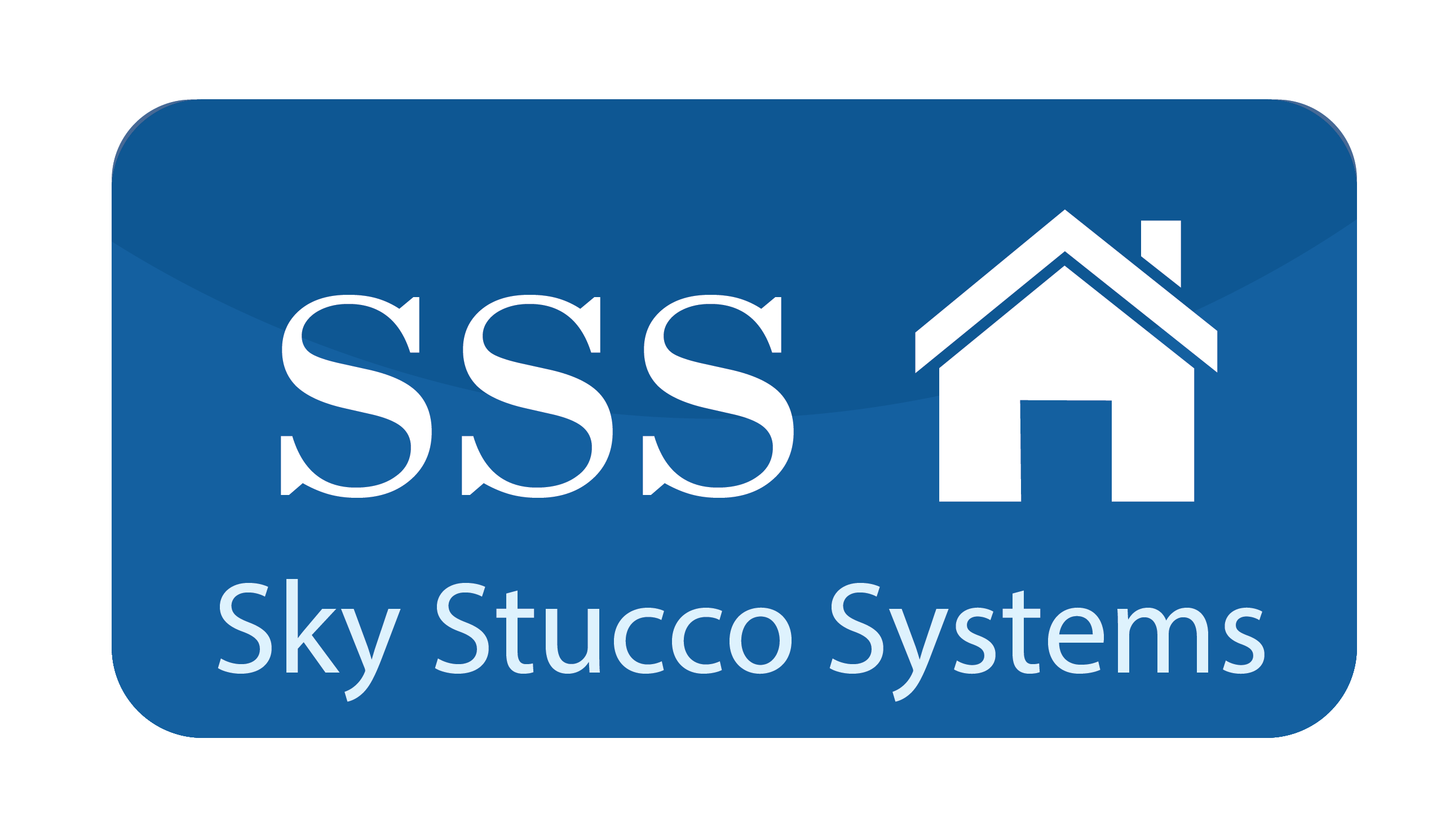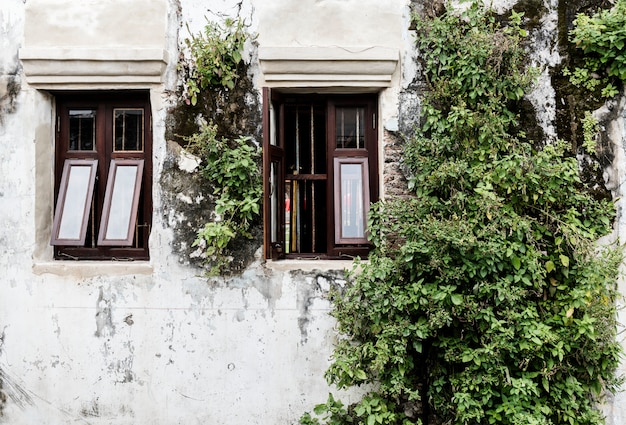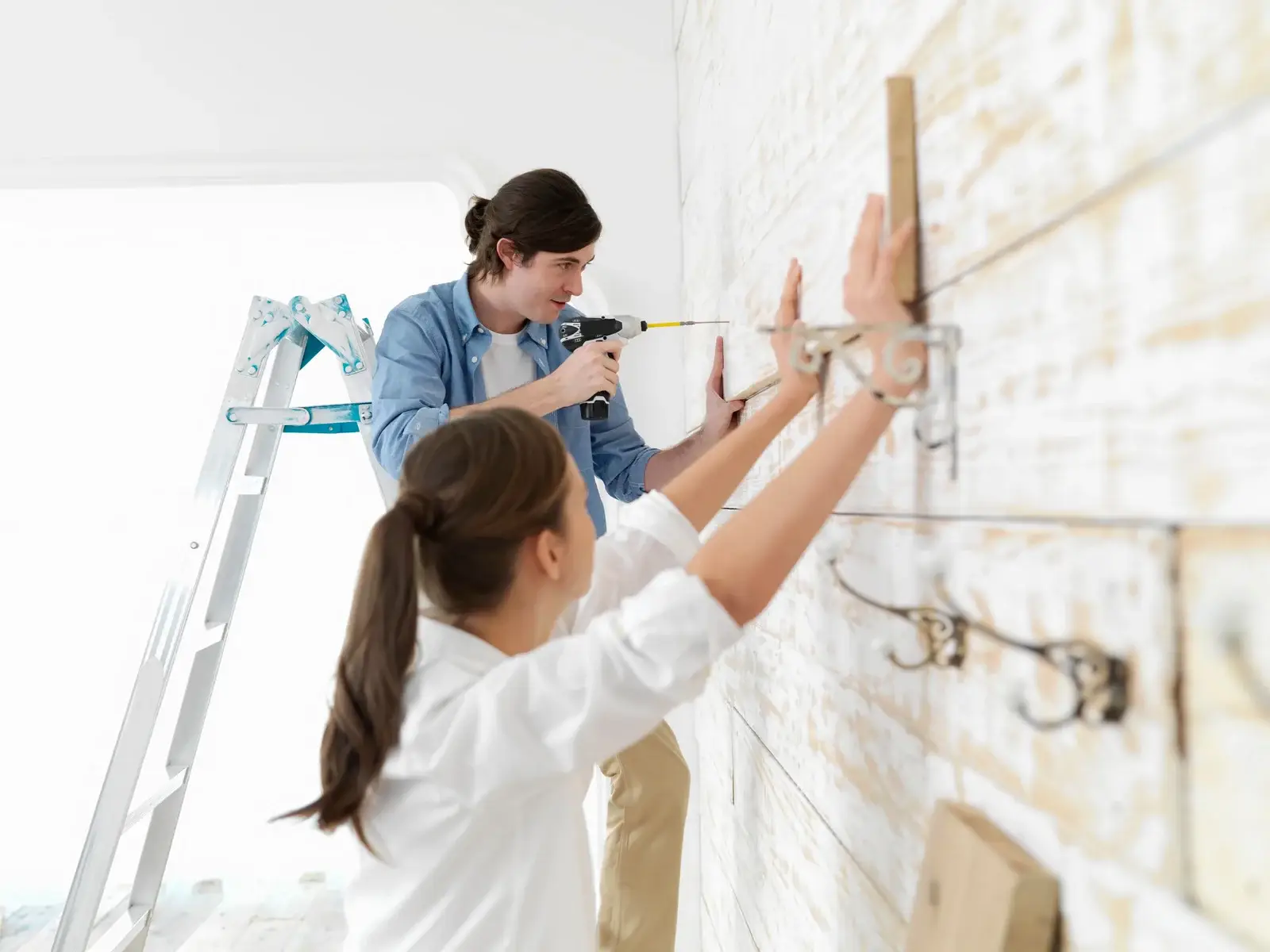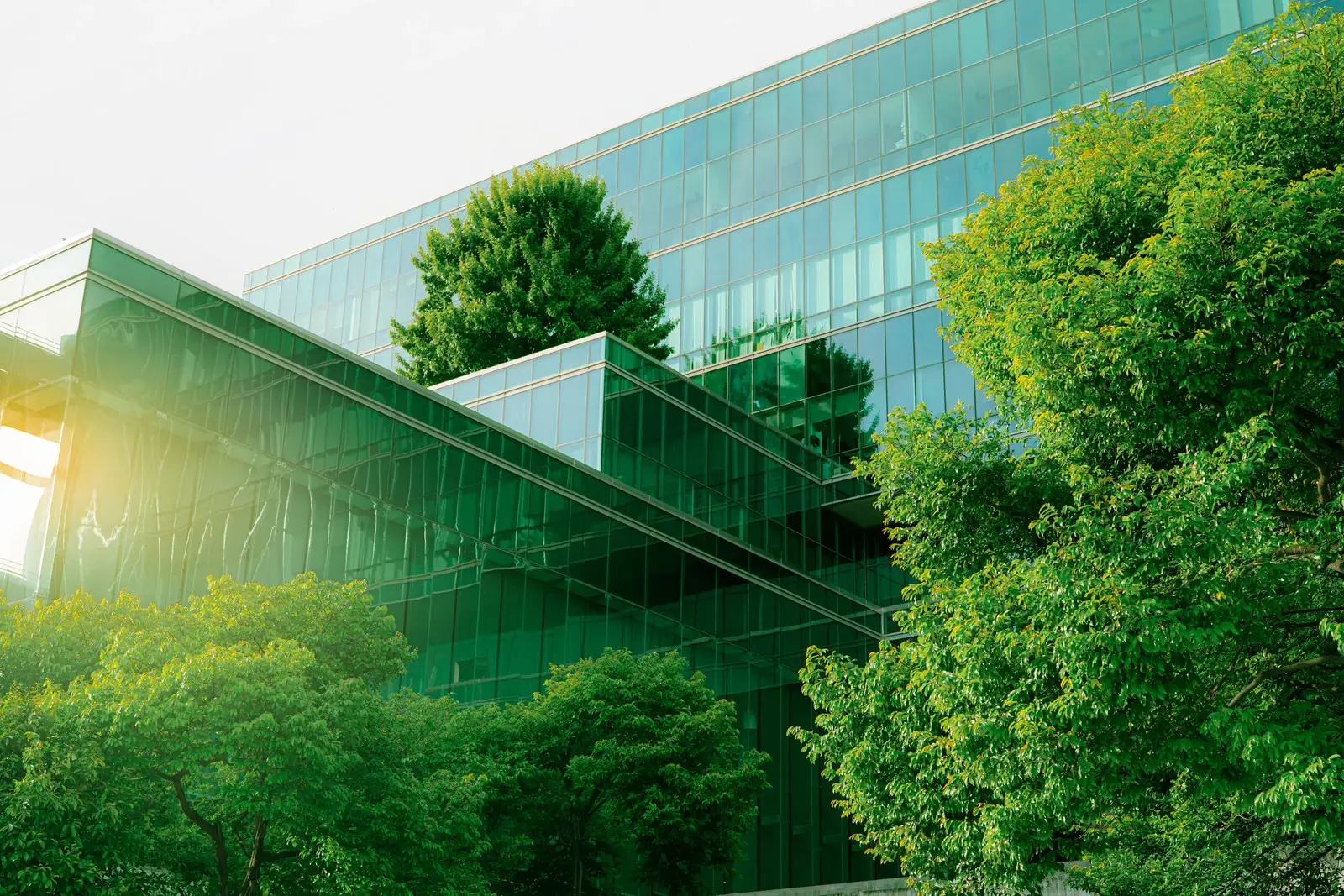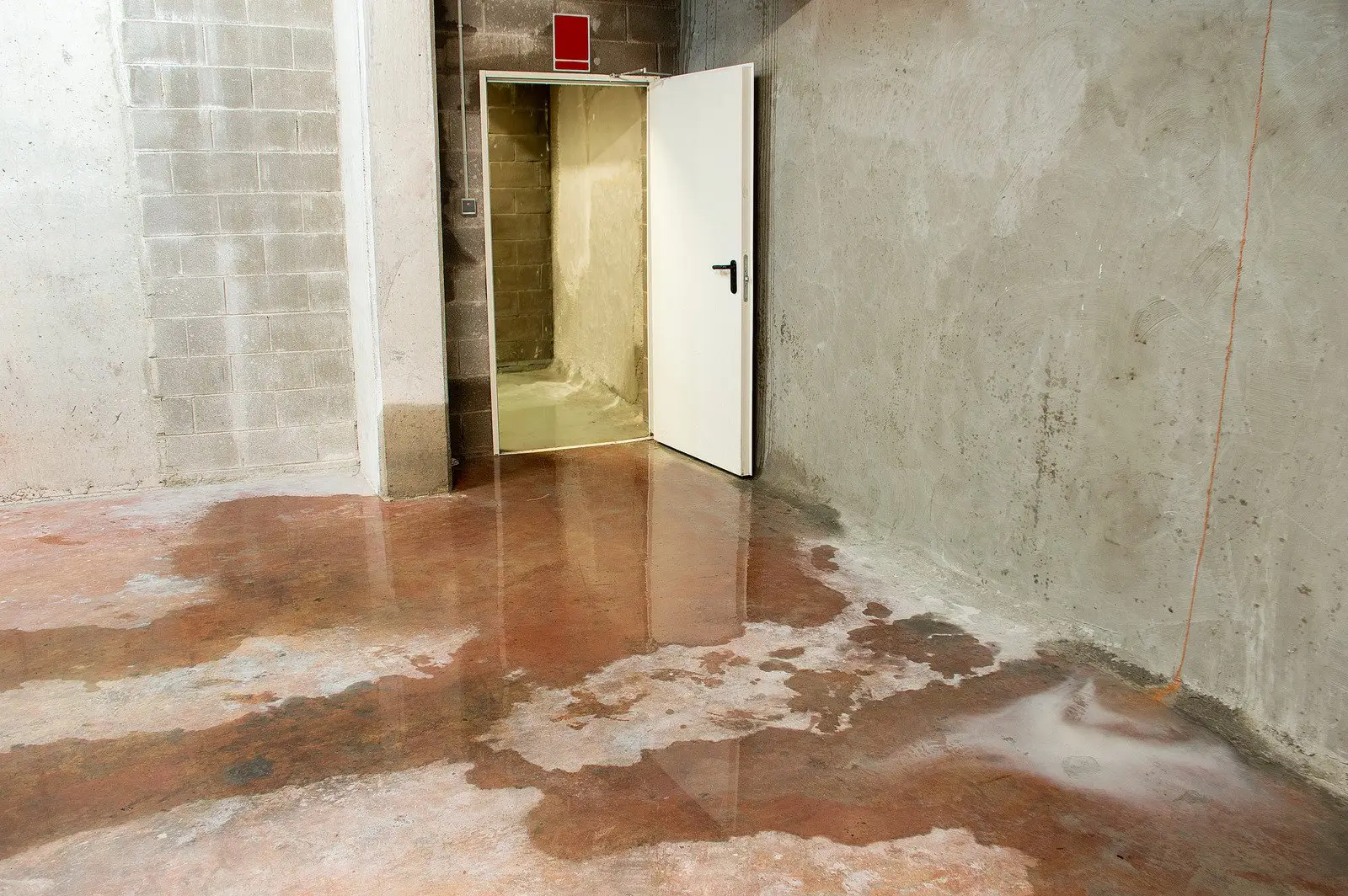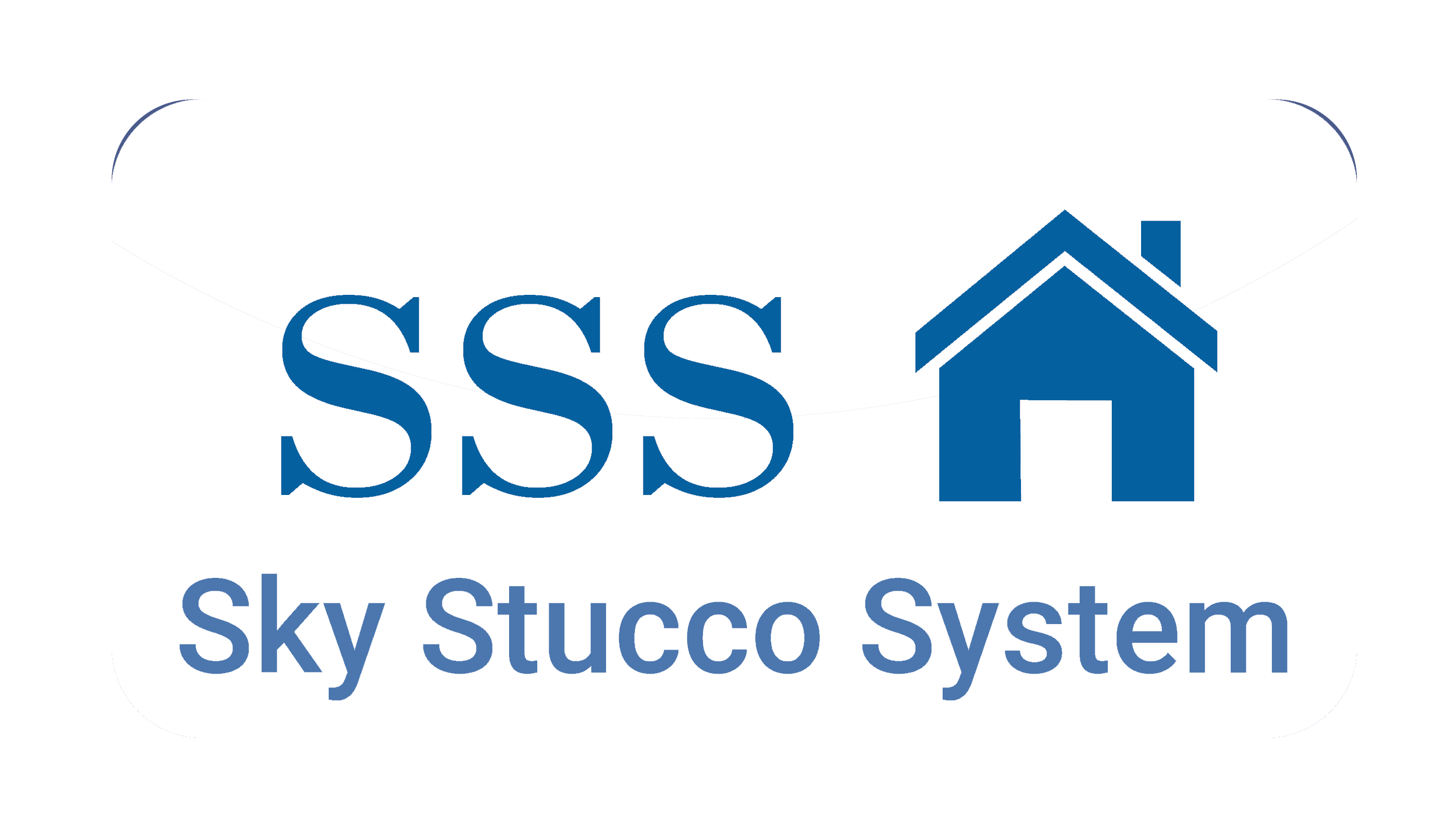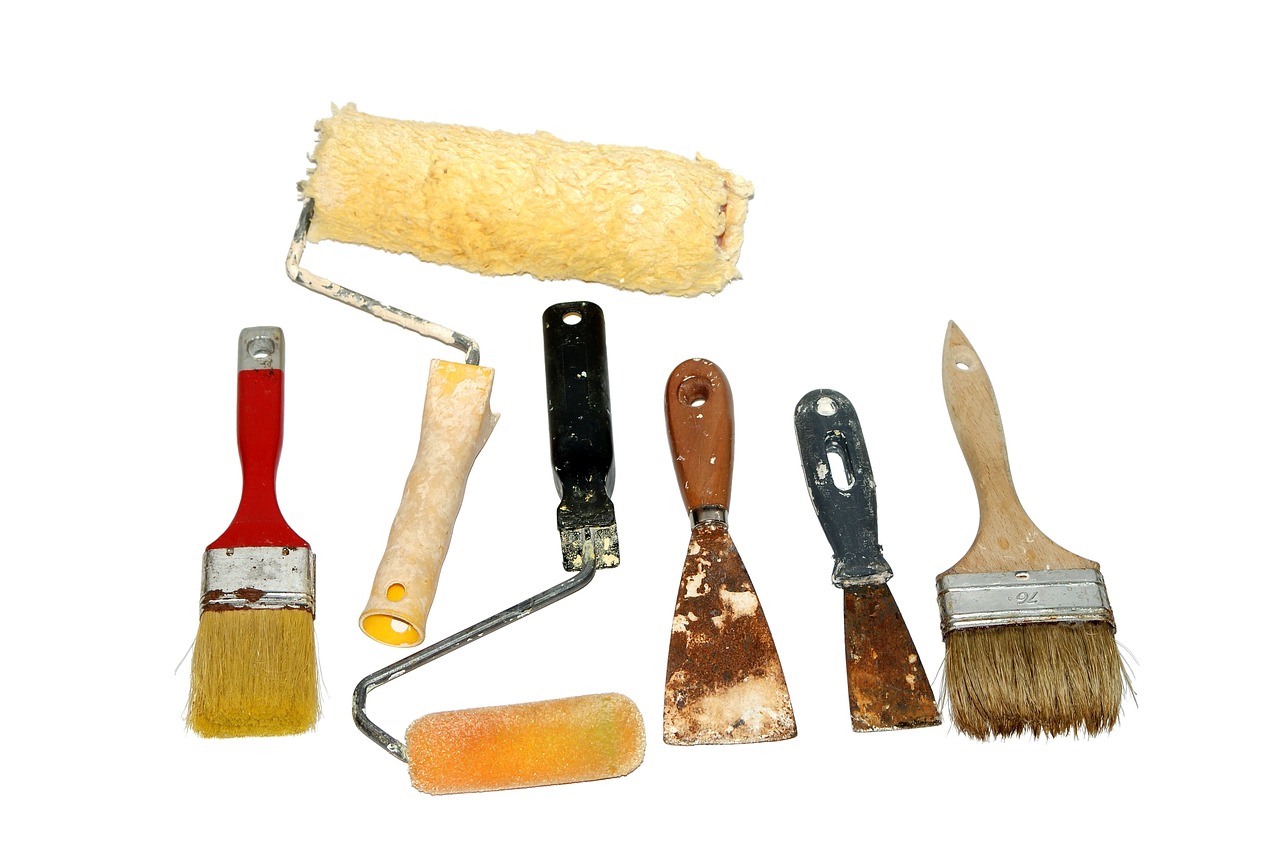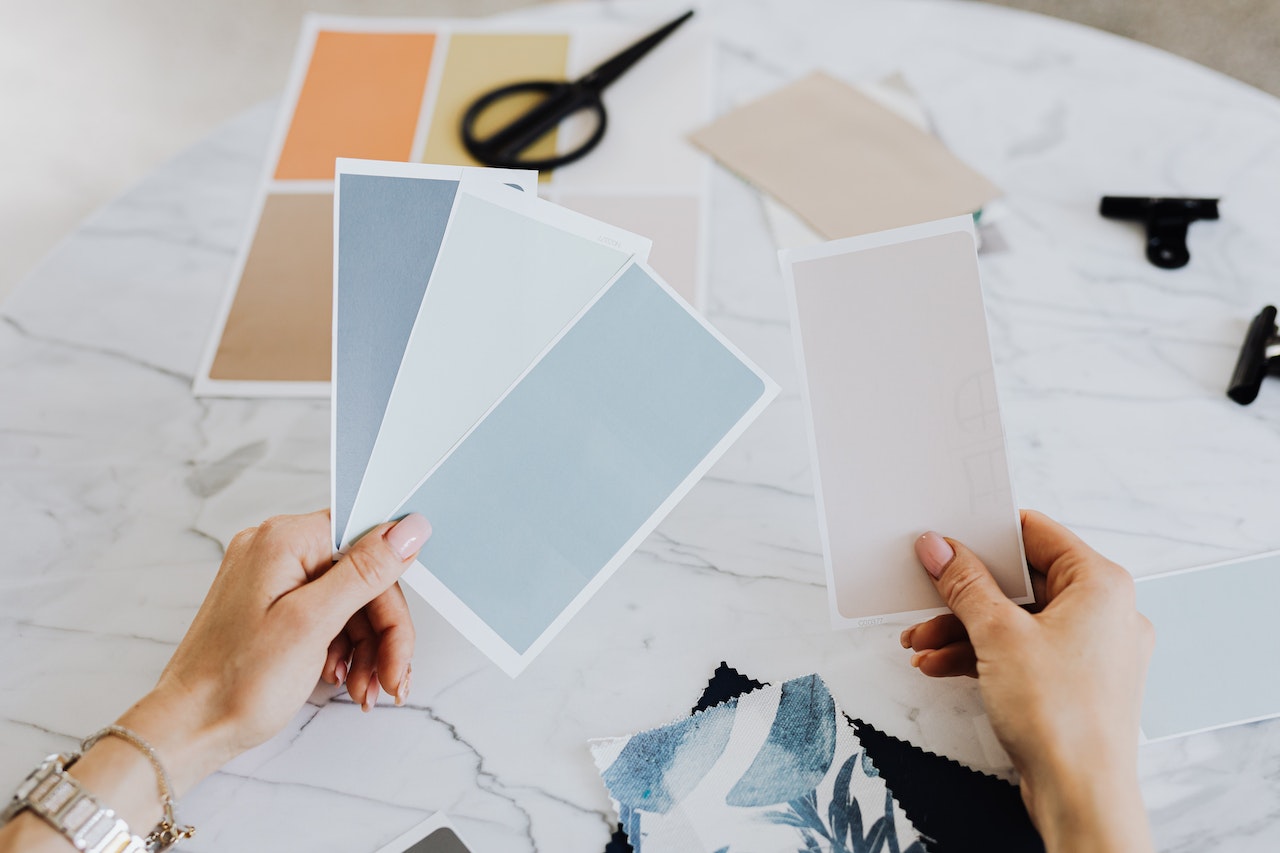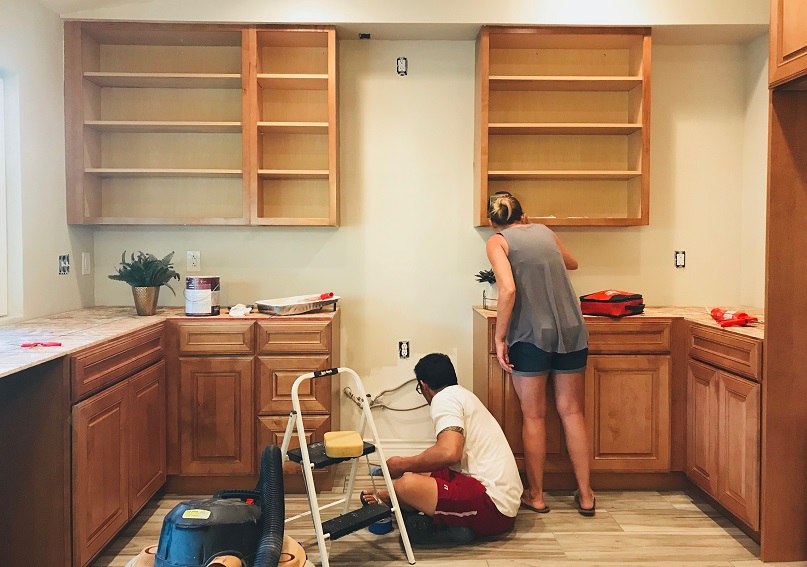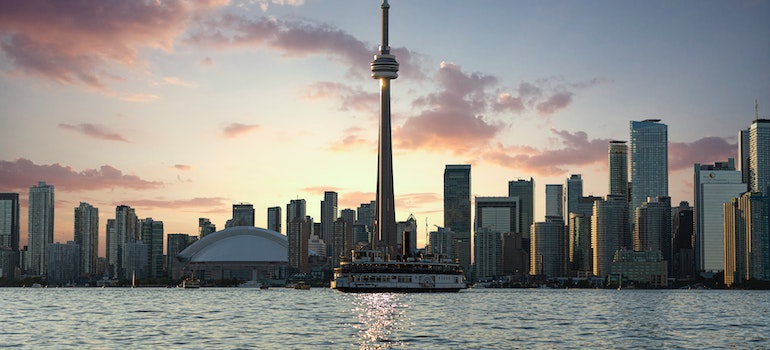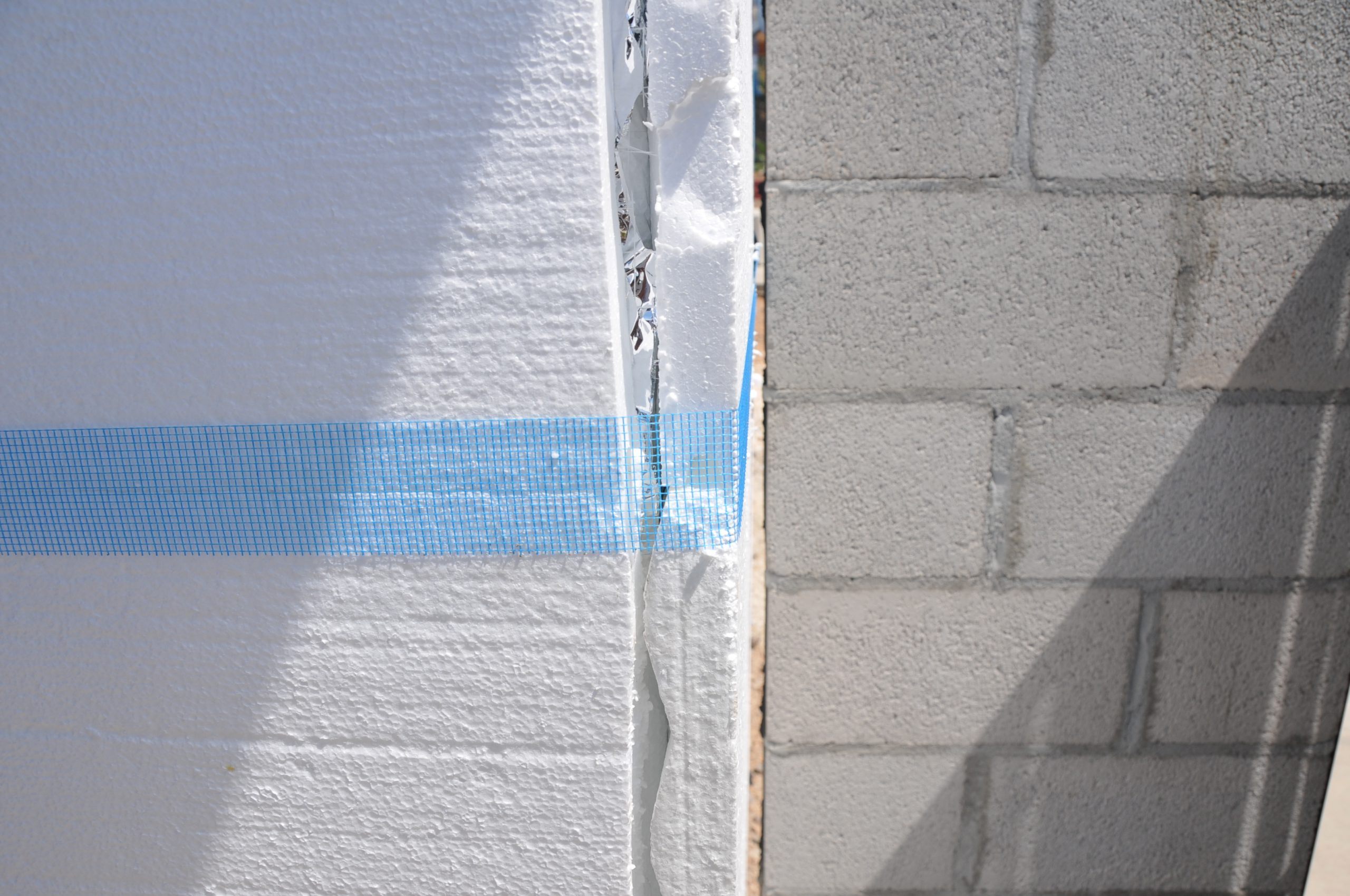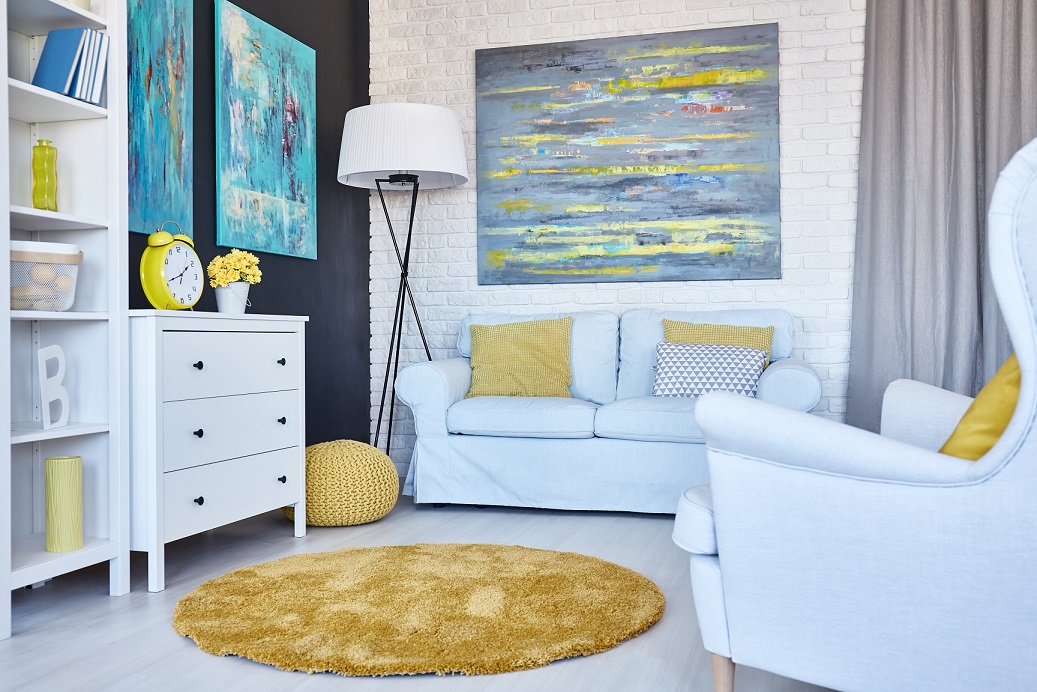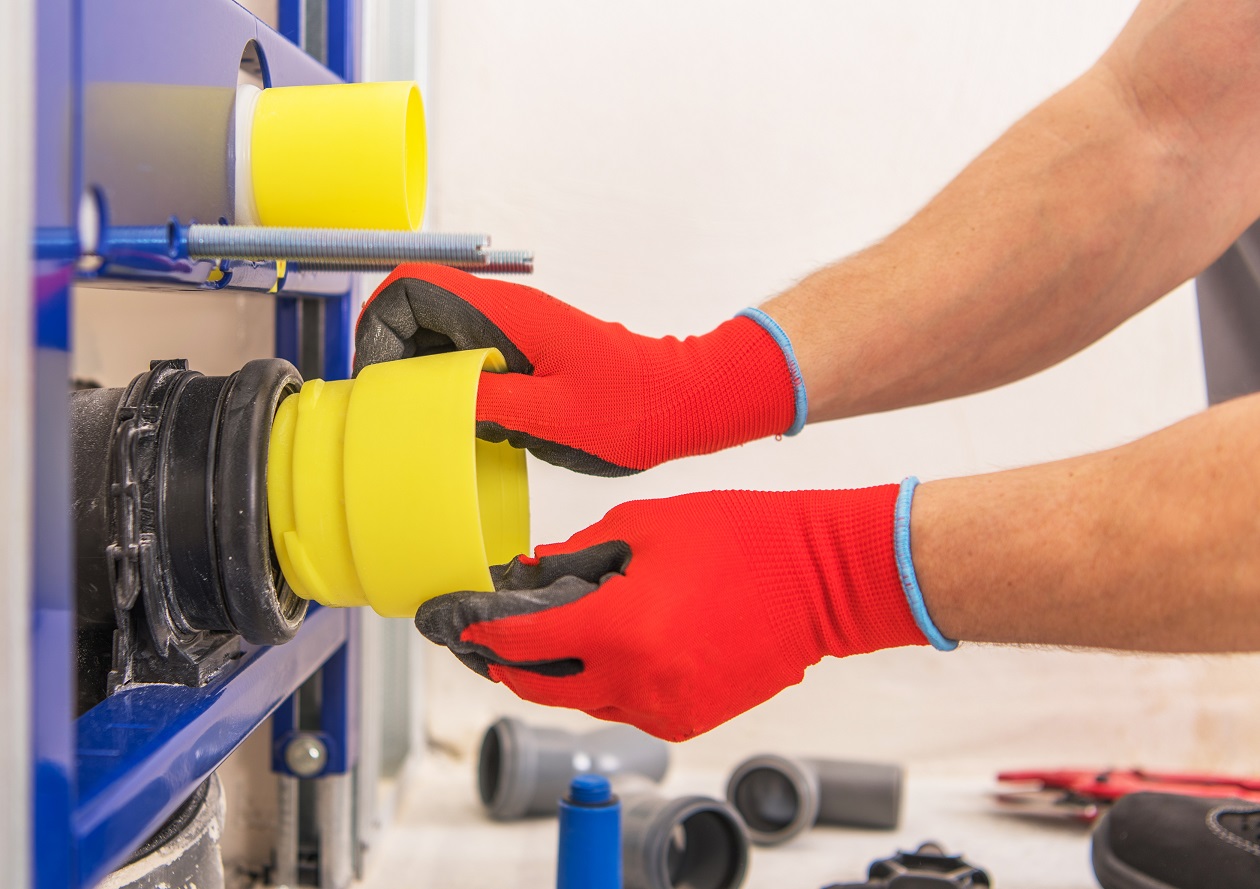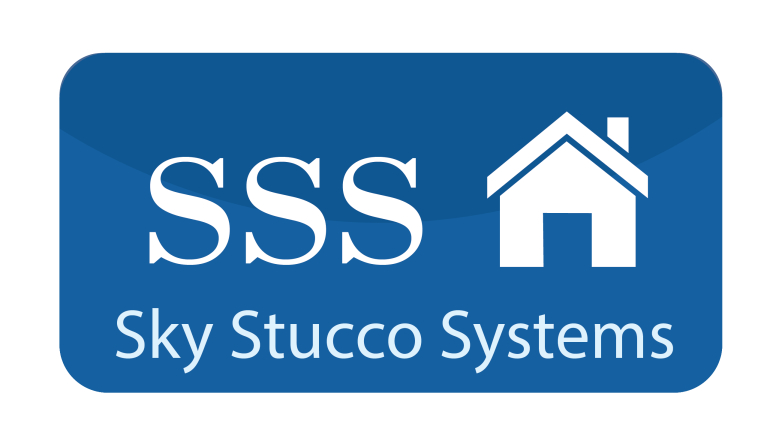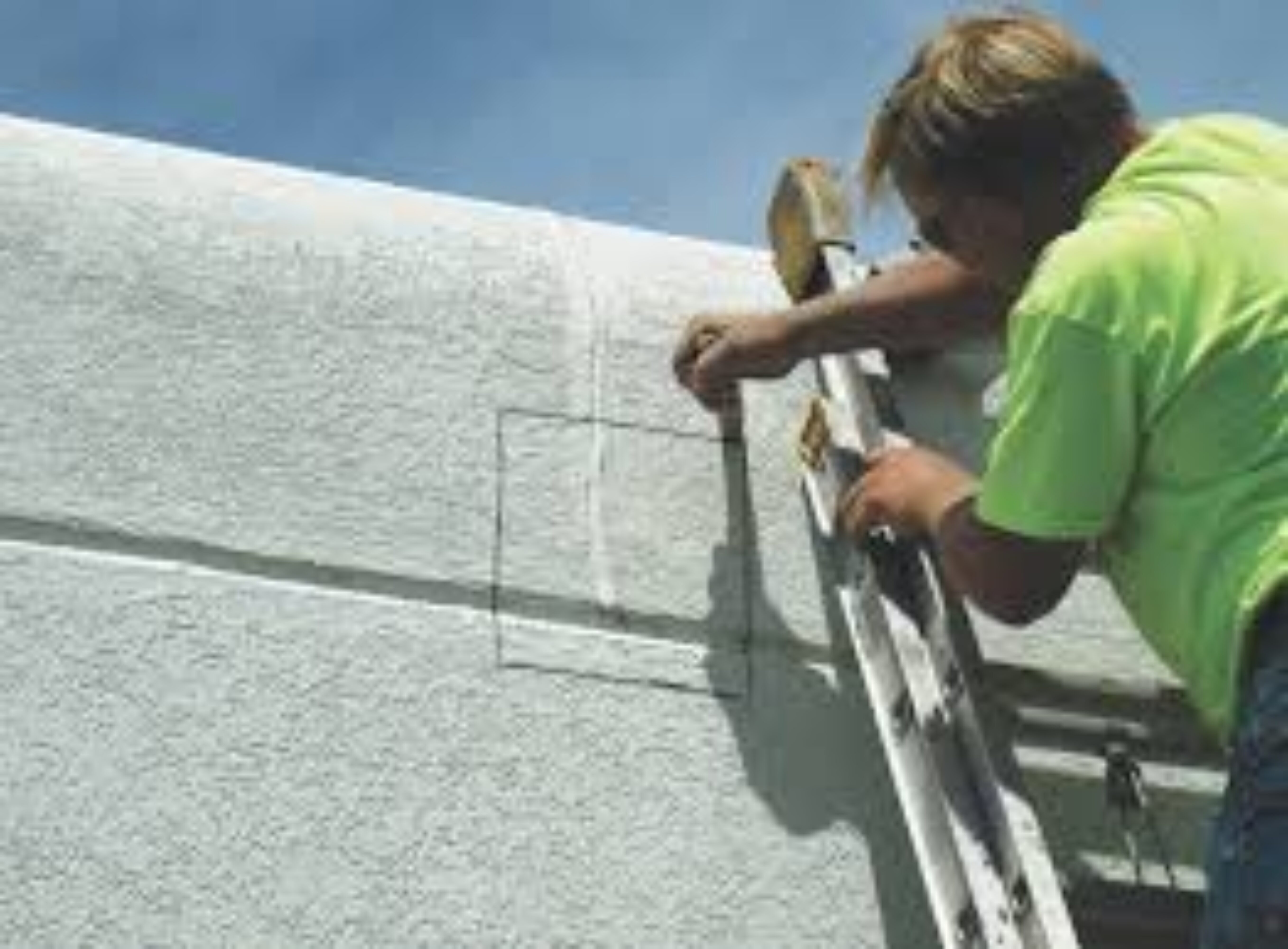
EIFS wall stucco has to be kept in a temperature range between warm and cool to cure appropriately. The typical temperature recommendations vary from a minimum of 40 degrees Fahrenheit to a maximum of 90 degrees Fahrenheit. If the temperature is too low, there is a possibility that the water in the new plaster may freeze.
EIFS Stucco Process Overview
Traditional eifs wall stucco coverings are being phased out in favor of solutions that maintain a similar appearance but are more durable and weather resistant.
Different manufacturers use the same fundamental process in creating what is often referred to as an “exterior insulation & finishing system”
Stiff sheets or panels of insulating foam are affixed to the outside of a building. Then synthetic mixtures that appear like mortar are troweled on top.
You should familiarize yourself with the EIFS wall if the traditional stucco aesthetic is important to the design of your new house or expansion.
Stucco has to be flexible to expand and contract with the structure as temperatures rise and fall, preventing cracks and keeping water out. This is essential because of the flexibility of modern high performance. EIFS polymer stuccos are the major difference between those and older, crack-prone cement-based stuccos. Moreover, an extreme case is the best way to illustrate the concept.
The flexibility and stickiness of current stuccos are shown in this exercise. Even though polymer stuccos are never applied to plastic sheets in the field. As soon as the stucco has dried, the sheet may be shaped any way you want without breaking or coming apart.
All exterior insulation and finish systems (EIFS) rely on insulating foam sheets adhered or mechanically connected to the outside of wall frames (depending on the specific EIFS).
After the glue has been troweled onto the foam’s outside, a layer of woven fiberglass reinforcement mesh is placed.
Next, a layer of synthetic stucco is applied as a finish. It’s used on top of the undercoat and is the EIFS component on display.
Plastering in hot weather
It is possible for the applied plaster to dry before the setting process has properly progressed when circumstances are hot and dry.
The material that has only partly hardened will often have a powdery surface. Which will not serve as an adequate foundation for the succeeding coat or for ornamentation. Plasters that include cement are more susceptible to changes in temperature and humidity. If this occurs, the surface must be maintained in a consistently damp condition during the curing process.
Multi-finish plaster temperature
Plaster should be applied in an environment with a minimum working temperature of 2 degrees Celsius, as we recommended.
During the application stage, as well as the phase in which the substance is setting & drying. It is essential that temp stays below 0 degrees Celsius. Once it has completely hardened and become dry. Multi-Finish may only be used in conditions where the temperature doesn’t exceed 49 degrees Celsius. Plaster that is already dry and packaged is unaffected by low temperatures.
When applying stucco plasters in hot and/or dry circumstances. Care should be given to prevent excessive water loss as much as possible so as not to compromise the quality of the finished product.
Ideal plastering temperature celsius
Plaster application must occur when the surrounding environment’s temperature is more significant than 4.4 ° C. unless facilities are made to maintain cement plasterwork. At a temperature of at least 4.4 degrees Celsius during application and for 48 hours after that.
Plaster setting times may be shortened when temperatures outside are considered higher than what is considered “normal.” Even though there is no absolute maximum temperature for a room where plastering can be done. Extra caution should be exercised when temperatures outside are in the same category.
It is recommended that you apply the plaster to small parts since the working period of the plaster will be cut down.
What would be most beneficial for your house?
When you consider the many aspects of pricing, eifs installation, and upkeep. You could ask questions like, “How do I select what’s ideal for my home?”
The answer depends on the features that define traditional stucco as distinct from synthetic stucco. Consider your financial constraints, whether you would like a colored wall or one that is decorated. And the environment in which you live. A home that has EIFS that has been placed correctly is an excellent choice to make. If you reside in an area that often experiences storms and heavy rains. Conventional stucco may be the ideal option for your home if you reside in an area with more stable temperatures and drier air.
Despite the increased cost, there is no doubt that EIFS is a system that is both adaptable and long-lasting; this cannot be denied.
What more would you want to learn now that you understand the distinctions between EIFS and stucco? Feel free to get in touch with us if you are in need of further information regarding these systems or if you have queries that were not addressed in the previous section.
Frequently Asked Questions
Can plaster when it’s raining?
The process of chlorination might be adversely affected by the rain, and the process of plastering can also be complicated by precipitation. Once the plastering has begun, rainfall will produce streaks, discoloration, and inappropriate material curing.
Not only would it leave spots, but it will also leave something in the granite and plaster known as hydrostatic holes.
How do you tell when the plaster has completely dried?
The most obvious indicator is that there has been a color shift. Dry plaster has a delicate, creamy pink color, but the wet application has a deeper appearance with hues of brown or red. In addition to this, you want the color to be consistent throughout.
Does plaster dry waterproof?
Once it has been cured, Plaster of Paris is an incredibly porous substance that will absorb any additional water that comes into contact with its surface.
Plaster of Paris must have as many of its surface pores as possible filled for it to be waterproof and suitable for usage in outdoor settings or brief exposure to water.
What is the most significant issue that might arise with stucco on the outside?
It is possible for a home’s stucco to become a breeding ground for mold, rot, cracking, and crumbling if it does not have the proper space or is below the grade. This may occur when the stucco is under the grade or needs more room. In addition, the stucco will start to take in more moisture from the earth as time passes.
How many years will the stucco remain in good condition?
50-80 years
Stucco is a highly long-lasting finishing medium, with an average lifespan of fifty to eighty years or even more. When compared to other siding materials, it has the lowest yearly maintenance cost while being one of the most durable surfaces that can be purchased. Stucco is a naturally occurring substance that includes an aggregate, a binder, plus water in its composition.
What temperature should the walls of the outside be?
According to our research, the temperature should be between 60 and 85 degrees Fahrenheit. Even though it may not seem like much of a problem at first, a little wind might cause the paint to dry far too rapidly. The temperature limits will vary depending on the kind of paint being used.
What is the thickness of the insulation used for EIFS?
A thickness of one inch is usually considered the bare minimum for EIFS. In the immediate vicinity, where clearance could be a concern. It is allowed to have a thickness of 3/4 inch.
Conclusion
EIFS stucco has several advantages over traditional stuccoes, such as better insulation, simpler installation, fewer cracks in the final wall, the ability to rasp the foam to fix a crooked wall, and a more comprehensive range of possible design forms. The best EIFS stucco company in Canada is Sky Stucco System.
